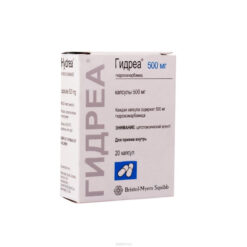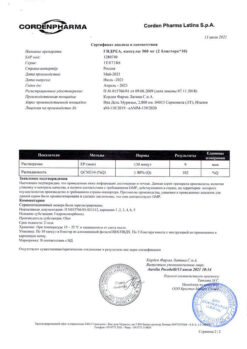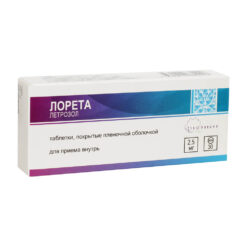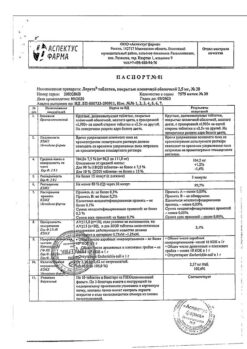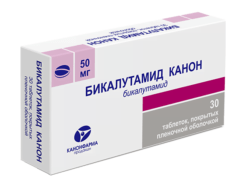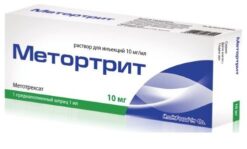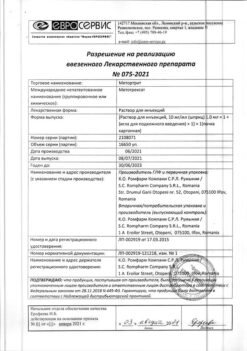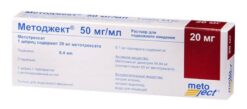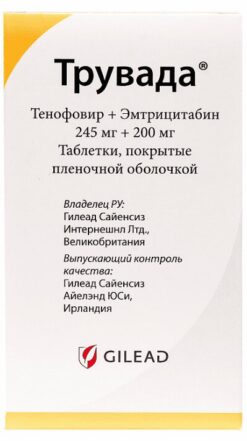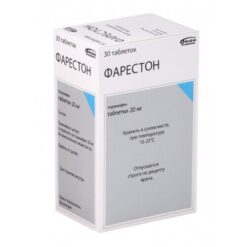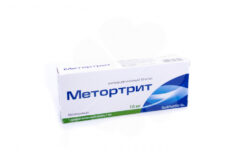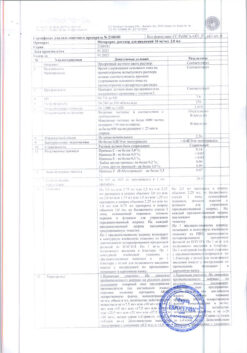No products in the cart.
Description
Pharmacodynamics
Antitumor agent. It is an A2 fraction isolated from Streptomyces verticillus culture containing the antitumor antibiotic itself. The mechanism of action is associated with the ability to cause fragmentation of DNA molecules. It has weakly expressed myelodepressive and immunosuppressive activity.
Pharmacokinetics
Protein binding is 1%. Subjected to metabolism, the pathways of which are not precisely determined.
T1/2 with a CK of more than 35 ml/min is 115 min. It is excreted by the kidneys, 60-70% mostly unchanged.
Indications
Indications
Cancer of the skin, esophagus, lung, cervix, thyroid, kidney;
malignant tumors of the head and neck;
soft tissue sarcomas, osteogenic sarcoma;
lymphogranulomatosis, non-Hodgkin’s lymphoma, germ cell tumors of the testicle and ovaries.
treatment and prevention of exudative pleurisy and treatment of exudative peritonitis in malignant tumors (intracavitary administration).
Pharmacological effect
Pharmacological effect
Pharmacodynamics
Antitumor agent. It is an A2-fraction isolated from a culture of Streptomyces verticillus, containing the antitumor antibiotic itself. The mechanism of action is associated with the ability to cause fragmentation of DNA molecules. It has mild myelosuppressive and immunosuppressive activity.
Pharmacokinetics
Protein binding 1%. Subject to metabolism, the pathways of which are not precisely established.
T1/2 with CC more than 35 ml/min is 115 minutes. It is excreted by the kidneys, 60-70% mainly unchanged.
Special instructions
Special instructions
Use with caution in patients with lung diseases (including a history), with impaired renal function, with coronary artery disease, heart defects, in the elderly, as well as in patients who have received or are receiving radiation therapy.
Use with caution in patients with chickenpox (including recent or after contact with sick people), herpes zoster and acute infectious diseases.
During treatment, systematic monitoring of respiratory function, chest X-ray examination, and monitoring of kidney and liver function are necessary. If cough or dyspnea occurs, treatment should be stopped and GCS and antibiotics prescribed.
Safety of use in pediatric practice has not been established.
Experimental studies have established the carcinogenic and mutagenic effects of bleomycin. In this regard, when using bleomycin to treat other diseases (mycosis fungoides, simple warts), extreme caution is required.
Active ingredient
Active ingredient
Bleomycin
Composition
Composition
Active ingredients:
bleomycin (in the form of hydrochloride) – 15 mg.
The bottle contains 15 mg of lyophilisate.
The package contains 1 bottle.
Pregnancy
Pregnancy
Bleomycin is contraindicated during pregnancy. If use is necessary during lactation, breastfeeding should be discontinued.
Women of childbearing potential receiving bleomycin therapy should use reliable methods of contraception.
Experimental studies have established the teratogenic and embryotoxic effects of bleomycin.
Contraindications
Contraindications
Severe respiratory dysfunction;
fibrosis of lung tissue;
severe renal dysfunction (creatinine clearance less than 35 ml/min) and/or liver;
diseases of the cardiovascular system of severe course;
pregnancy;
hypersensitivity to bleomycin.
Side Effects
Side Effects
From the respiratory system: interstitial pneumonia, pulmonary fibrosis.
From the digestive system: nausea, vomiting, anorexia, angular stomatitis, liver dysfunction.
From the urinary system: impaired renal function, frequent and painful urination.
From the side of the central nervous system: headache, dizziness.
From the reproductive system: azoospermia, amenorrhea.
Allergic reactions: erythema, urticaria, anaphylactoid reactions. Dermatological reactions: focal hyperkeratoses, hyperpigmentation, dermatitis, nail deformation, alopecia.
Other: fever, leukopenia; rarely – toxic effects on blood vessels (including cerebral arteritis, stroke, myocardial infarction).
Interaction
Interaction
Bleomycin increases the risk of pneumotoxicity in patients receiving oxygen (eg, as part of general anesthesia).
When used simultaneously with drugs that have myelotoxic and pneumotoxic effects, the risk of side effects may increase.
It is possible to slow down the clearance of bleomycin and increase its toxic effect even when used in low doses due to the nephrotoxic effect of cisplatin.
Overdose
Overdose
Symptoms: Immediate acute reactions in case of overdose are hypotension, fever, rapid pulse and general symptoms of shock.
Treatment: symptomatic. In case of complications from the bronchopulmonary system, patients should be prescribed treatment with glucocorticosteroids and broad-spectrum antibiotics.
Storage conditions
Storage conditions
In a dry place, protected from light, at a temperature not exceeding 30 °C
Shelf life
Shelf life
2 years
Manufacturer
Manufacturer
Nippon Kaiaku, Japan
Additional information
| Shelf life | 2 years |
|---|---|
| Conditions of storage | In a dry, light-protected place at a temperature not exceeding 30 °C |
| Manufacturer | Nippon Kaiaku, Japan |
| Medication form | lyophilizate |
| Brand | Nippon Kaiaku |
Related products
Buy Bleocin, lyophilizate 15 mg with delivery to USA, UK, Europe and over 120 other countries.


